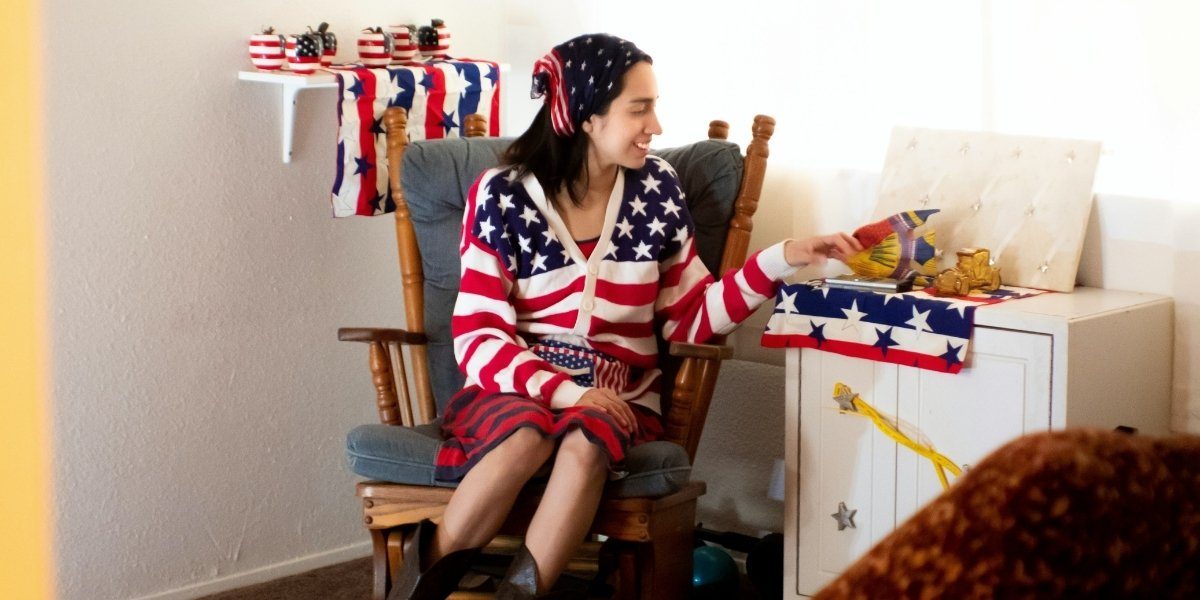The Symbolism of the American Flag
The American flag has long been a symbol of national pride, unity, and freedom. Consisting of thirteen stripes and fifty stars, it represents the original thirteen colonies and the fifty states that make up the United States of America. Its bold red, white, and blue colors have come to represent core ideals such as liberty, equality, and democracy.
While the flag is most often displayed in patriotic contexts, its visual elements have been woven into pop culture and art, where its meaning can shift depending on the creator’s message. The flag has been used to represent both nationalism and criticism of the status quo, often serving as a canvas for personal expression, social commentary, and artistic exploration.
Read Also: Deconstructing the Zeitgeist: Exploring the Ever-Evolving Landscape of Pop Culture
The American Flag in Pop Culture
The American flag has had a prominent place in pop culture, often appearing in movies, television shows, music, and even fashion. It has been employed to convey themes of patriotism, protest, and identity across various forms of media.
Film and Television
The flag often appears in American cinema, from classic war films to contemporary dramas, where it serves as a powerful visual symbol of the nation’s ideals or its struggles. In iconic moments like the flag raising on Iwo Jima in Flags of Our Fathers or the conclusion of Forrest Gump, the flag is used to evoke deep emotions and highlight significant events in American history.
In TV shows like The Simpsons and South Park, the flag is sometimes used for satirical purposes, poking fun at American patriotism or political ideologies. It can serve as a tool to challenge the notion of what it means to be truly American, reflecting the diverse opinions and complex identity of the country.
Music and Fashion
The American flag also finds its way into the music industry, where it has been used as a visual statement. Artists like Jimi Hendrix famously performed with the flag as part of his cultural and political expression. In punk rock and hip-hop, the flag has often been appropriated to question authority, highlighting both rebellion and pride.
In fashion, the flag has been a prominent motif, from Madonna’s 1984 “Like a Virgin” performance, where she donned a flag-inspired outfit, to designer collections that use the flag’s colors or stars and stripes. The flag has transcended its traditional role as a symbol of the nation to become a trend in fashion and design.
The American Flag in Art
Artists have long used the American flag as a subject to explore complex themes related to identity, politics, and cultural critique. By incorporating the flag into their artwork, these artists aim to challenge perceptions, provoke thought, and express personal or societal messages.
Jasper Johns and Flag Art
One of the most notable uses of the American flag in modern art is by Jasper Johns, an influential American painter. His 1954 work Flag (often considered his most famous piece) depicts a painted flag in a way that blends American iconography with abstraction. The work asks questions about national symbols, their meaning, and their emotional impact on viewers.
Johns’ flag artwork is often interpreted as a commentary on the relationship between the symbolism of the flag and American identity, considering both its status as a revered emblem and as a blank canvas open to interpretation.
Pop Art and Andy Warhol
Andy Warhol, a pioneer of the Pop Art movement, also engaged with the American flag as a subject in his art. His series of American flag works—using the stars and stripes as a visual base for his exploration of mass production, consumerism, and popular culture—demonstrates how an everyday symbol can be transformed into art that questions the culture it represents.
Warhol’s use of the American flag in his works, such as The American Flag series, recontextualized the flag’s meaning. By presenting it through the lens of mass production and commodification, Warhol not only celebrated the flag’s iconic status but also critiqued the ways in which national symbols are commercialized and consumed.
Contemporary Art and Protest
In contemporary art, the American flag has been used to express social and political dissent. Artists like David Hammons and Kerry James Marshall use the flag to address issues of race, inequality, and injustice in America. For example, in his 1990 installation The African-American Flag, Hammons created a variation of the traditional American flag that included symbolic references to African-American history and identity, highlighting the dissonance between the ideals of freedom and the reality of racial discrimination.
Similarly, during times of political upheaval or national crisis, artists have used the flag to criticize government policies, war, and social injustices. The flag’s juxtaposition in these works often serves as a contradictory symbol, both representing American values and the challenges inherent in living up to those values.
The American Flag as a Tool for Protest
The American flag has not only been used to promote national pride but also as a powerful tool for protest. In the 1960s and beyond, especially during the Vietnam War era, people burned or defaced the flag as a form of political protest, symbolizing discontent with government policies. This act of protest has sparked debates about freedom of speech, national pride, and the fine line between expression and disrespect.
Today, the flag continues to be used in protest movements such as Black Lives Matter and LGBTQ+ rights movements, where it is modified or displayed in ways that reflect the ongoing struggles for justice and equality. These acts often seek to reclaim the flag as a symbol of inclusivity and reform, challenging its traditional associations with nationalism.
The Ethics of Using the American Flag in Pop Culture and Art
The use of the American flag in pop culture and art raises important ethical questions. The flag is a symbol that many hold dear, and its manipulation or alteration can evoke strong emotions. Critics argue that it is disrespectful to use the flag for commercial gain or as a political tool, while others believe that artistic and political uses of the flag are part of its evolving role in society.
The ethical debate around the flag’s use in art and pop culture often centers on its sacred status as a national symbol and whether it should remain untouched or can be reimagined to suit modern expressions of freedom, dissent, and identity.
Read Also: Strength and Stamina: Achieving Fitness Through Tailored Swim Workouts
The American flag, with its rich history and symbolic power, continues to be a central figure in pop culture and art. From Jasper Johns and Andy Warhol to modern-day artists and political protests, the flag has evolved beyond its original purpose to become a dynamic tool for expression. Whether as a symbol of pride or a canvas for critique, the American flag remains an integral part of the conversation about identity, nationalism, and cultural critique.
As society continues to change, so too will the ways in which we interact with and reinterpret the flag, ensuring that its place in pop culture and art remains as relevant and thought-provoking as ever.








